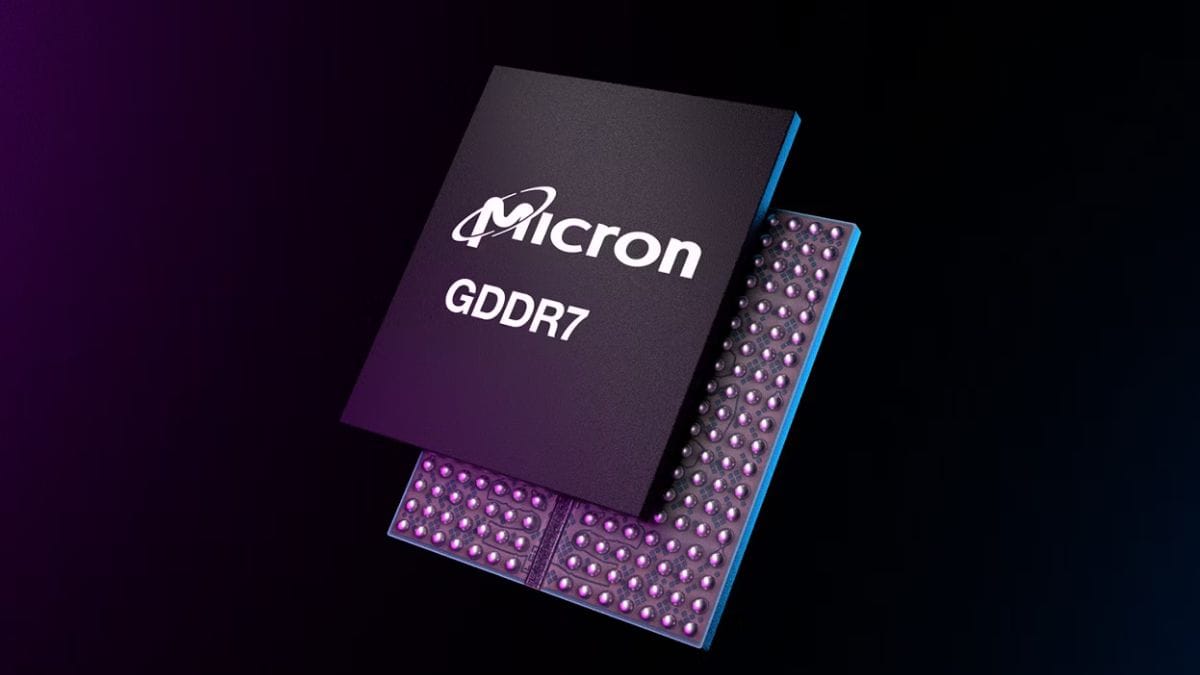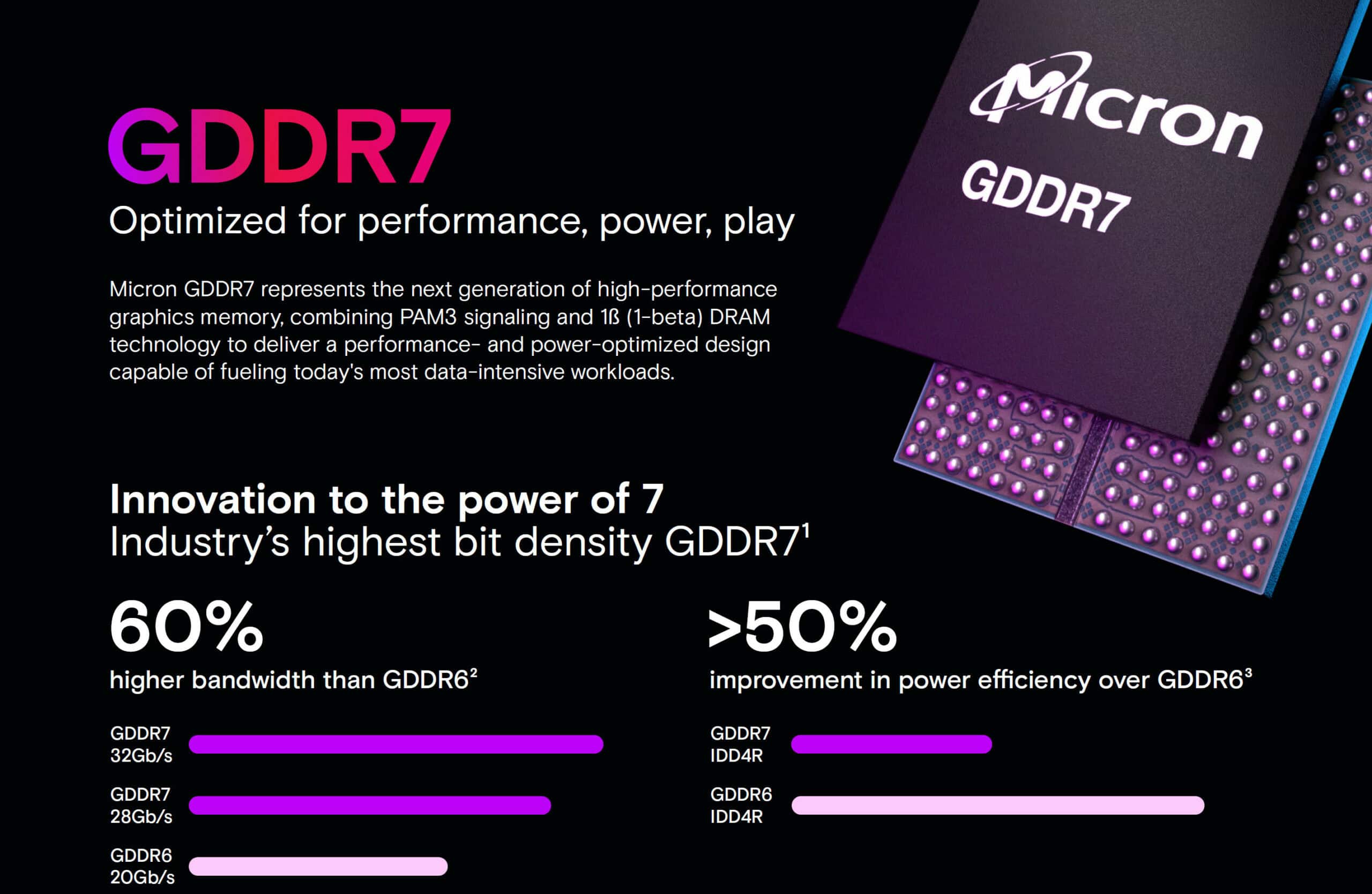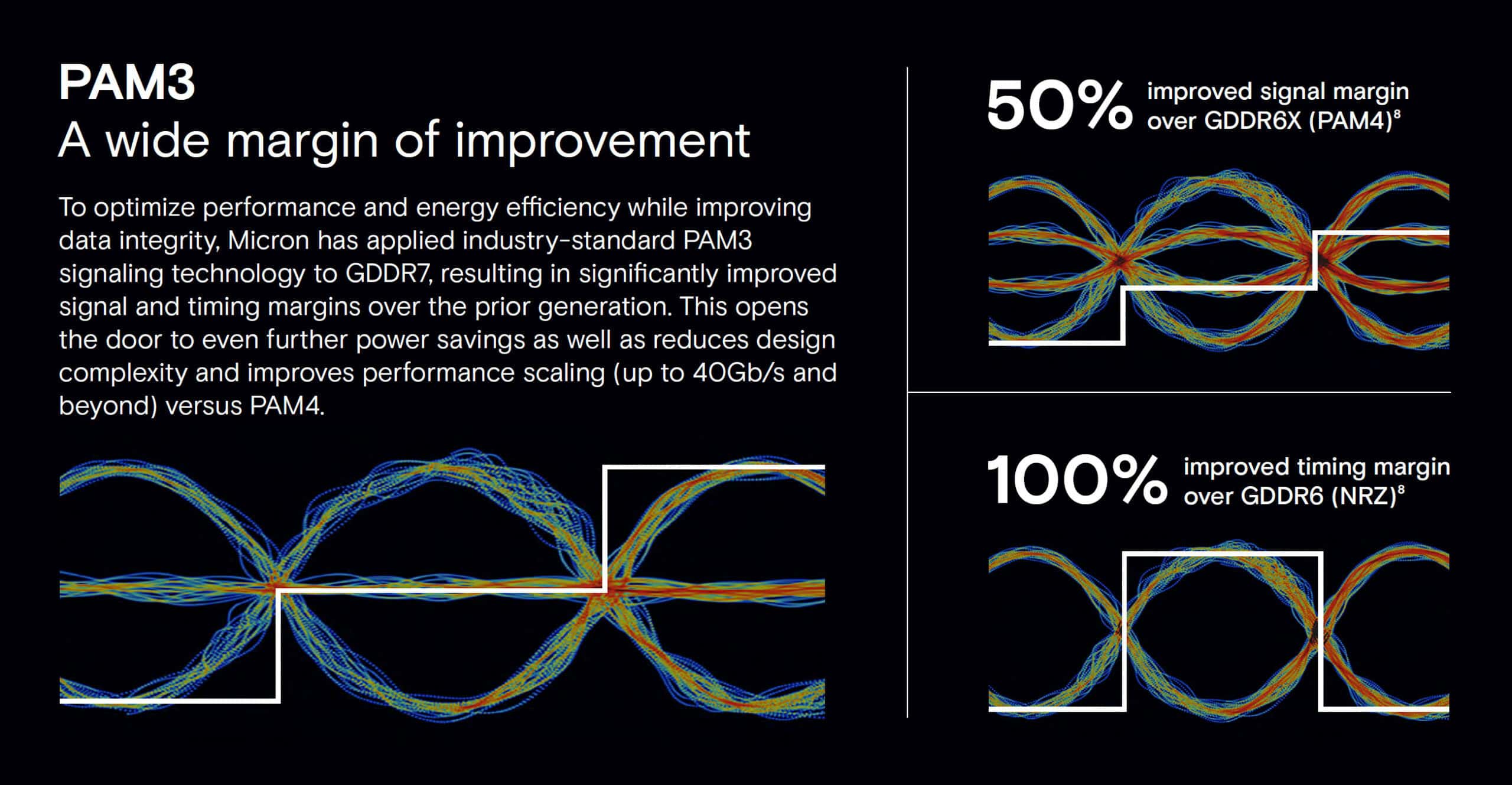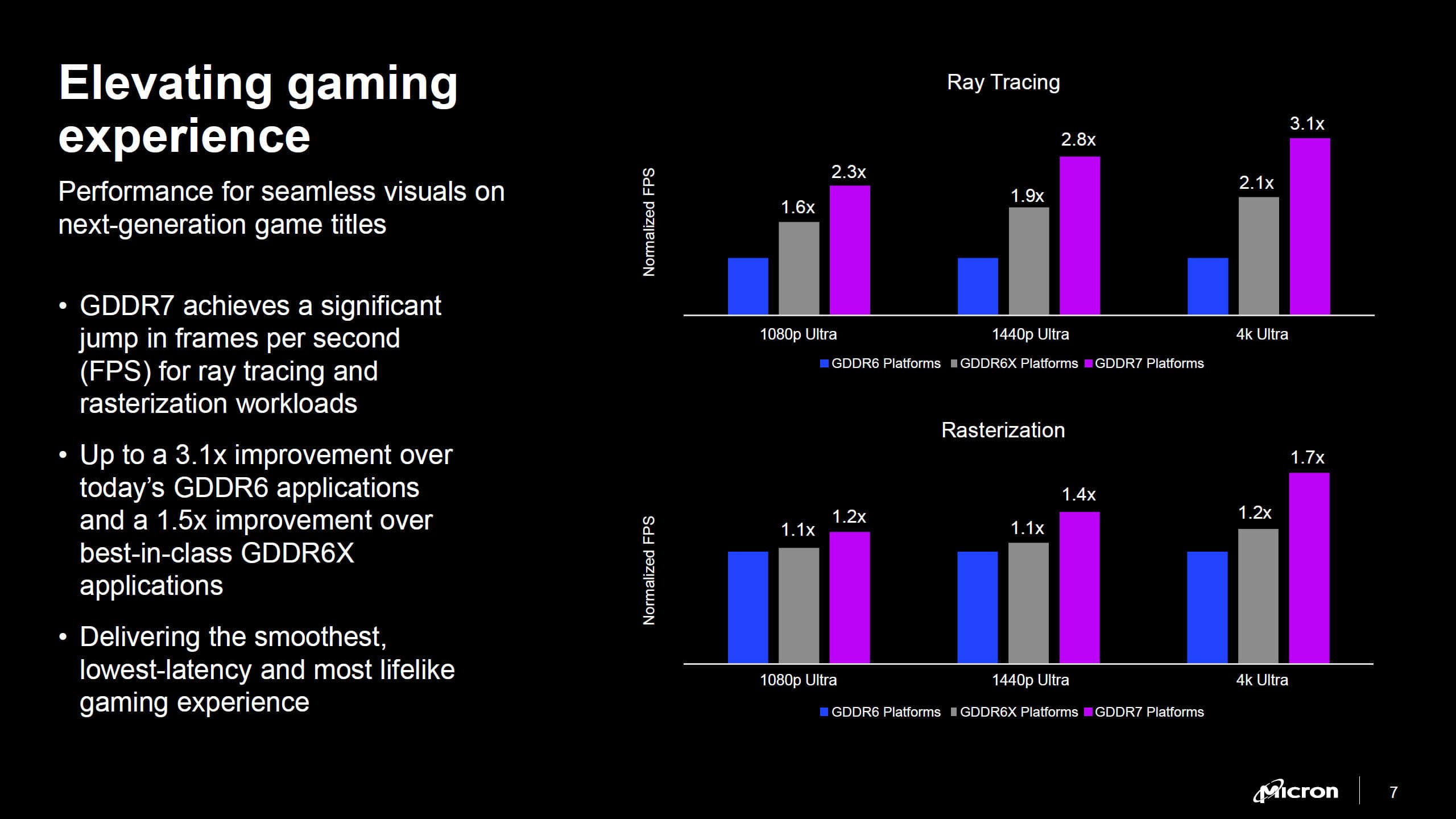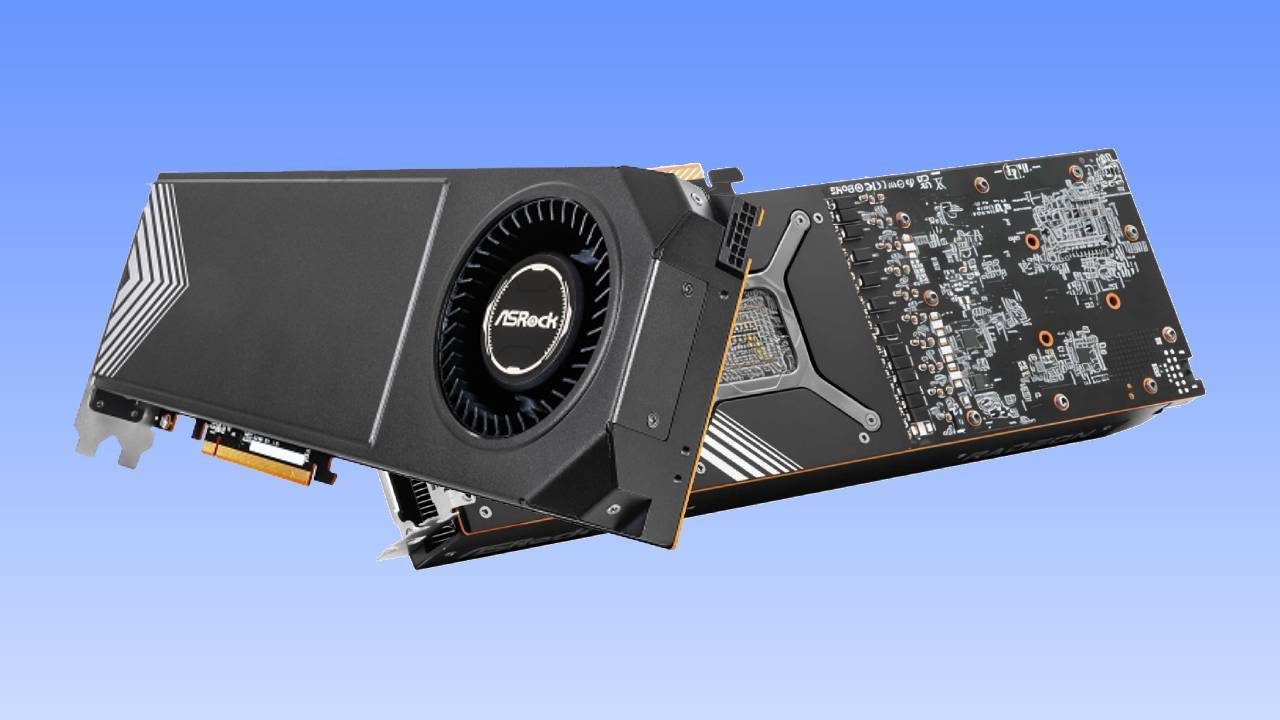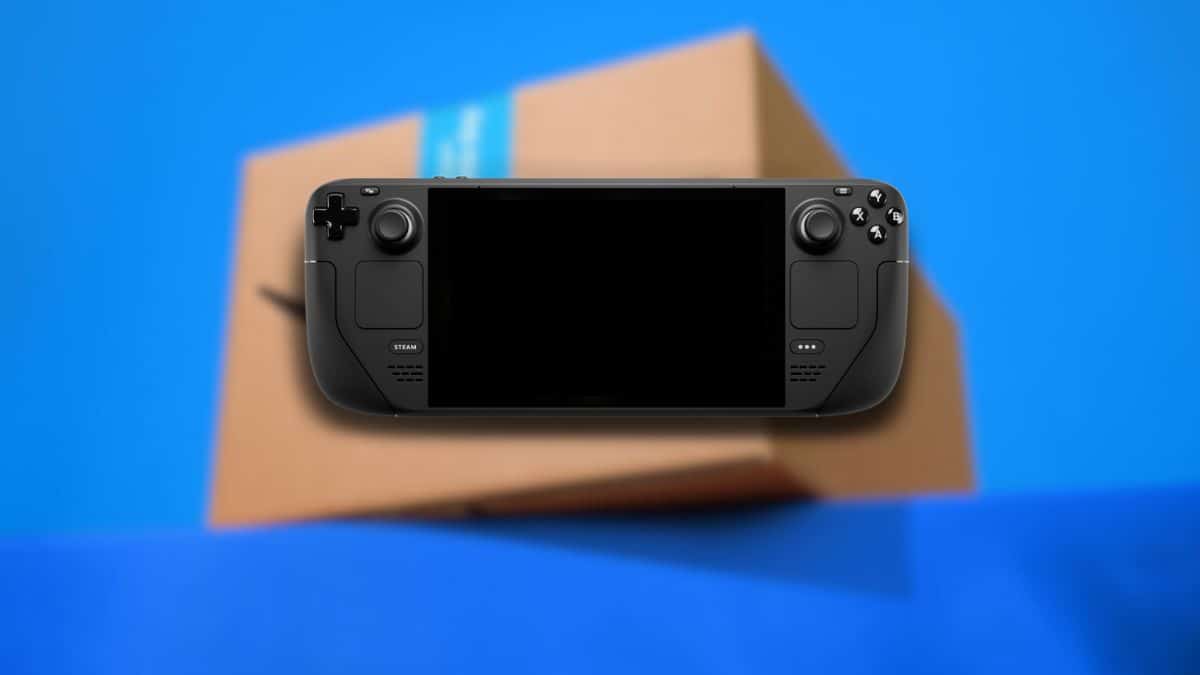Micron, a leading memory manufacturer, has unveiled its next-generation GDDR7 memory technology, promising a significant leap in gaming performance. This new memory standard boasts up to a 30% increase in frames per second compared to the current GDDR6, with improvements in both ray tracing and rasterization workloads.
The GDDR7 memory offers several key advantages over its predecessor, but with recent rumors that the AMD Radeon RX 8000 series will instead stick to GDDR6, Nvidia may be the one to take full advantage. Let’s walk you through what we think are the three key improvements.
Three major improvements for GDDR7 memory
Firstly, it boasts significantly faster speeds. Micron’s initial offerings come in variants with 28 and 32 Gbps speeds, a substantial leap from the 20 Gbps speeds commonly found in GDDR6. This translates to a 60% improvement in memory bandwidth, which plays a crucial role in feeding data to the GPU, ultimately impacting frame rates.
Secondly, GDDR7 brings power efficiency to the table. Micron claims a 50% improvement in power efficiency compared to GDDR6. This translates to reduced power consumption and potentially cooler running graphics cards, which can further benefit performance.
Thirdly, GDDR7 boasts faster response times, a 20% improvement over GDDR6. This translates to quicker data access, potentially leading to smoother gameplay and reduced stuttering. Micron highlights the potential performance gains of GDDR7. Their claims suggest a 3.1x improvement in ray tracing performance at 4K Ultra resolution and a 1.7x improvement in rasterization performance at the same resolution, both compared to GDDR6 memory.
Beyond raw GDDR7 specifications
Beyond the raw specifications, GDDR7 leverages 1-beta DRAM technology, offering high-performance 32 Gb/s memory in a power-optimized design. This, coupled with the industry’s first 40 Gb/s PAM3 signaling technology, promises to unlock new levels of performance for gamers. The impact of GDDR7 extends beyond just performance. With over 1.5 TB/s of system bandwidth, this memory can handle the ever-increasing demands of modern games, which often require large amounts of texture data and other resources.
While Micron hasn’t revealed the specific benchmarks used to measure the 30% FPS improvement, the overall technical specifications paint a promising picture. The increased bandwidth, faster speeds, and improved power efficiency all contribute to a potential performance leap for gamers.
Nvidia and AMD’s response
Looking ahead, industry giants like Nvidia are expected to embrace GDDR7 in their next-generation GPUs. Nvidia’s upcoming RTX 50 series (codenamed Blackwell) is rumored to utilize this new memory standard. On the other hand, current rumors tell us that AMD’s RX 8000 GPUs with RDNA 4 architecture allegedly use GDDR6, limited to 18Gbps.
The arrival of GDDR7 memory marks a significant step forward for gaming performance. With its impressive speed improvements, power efficiency gains, and faster response times, this new memory standard promises to deliver a smoother and more visually stunning gaming experience for all.



